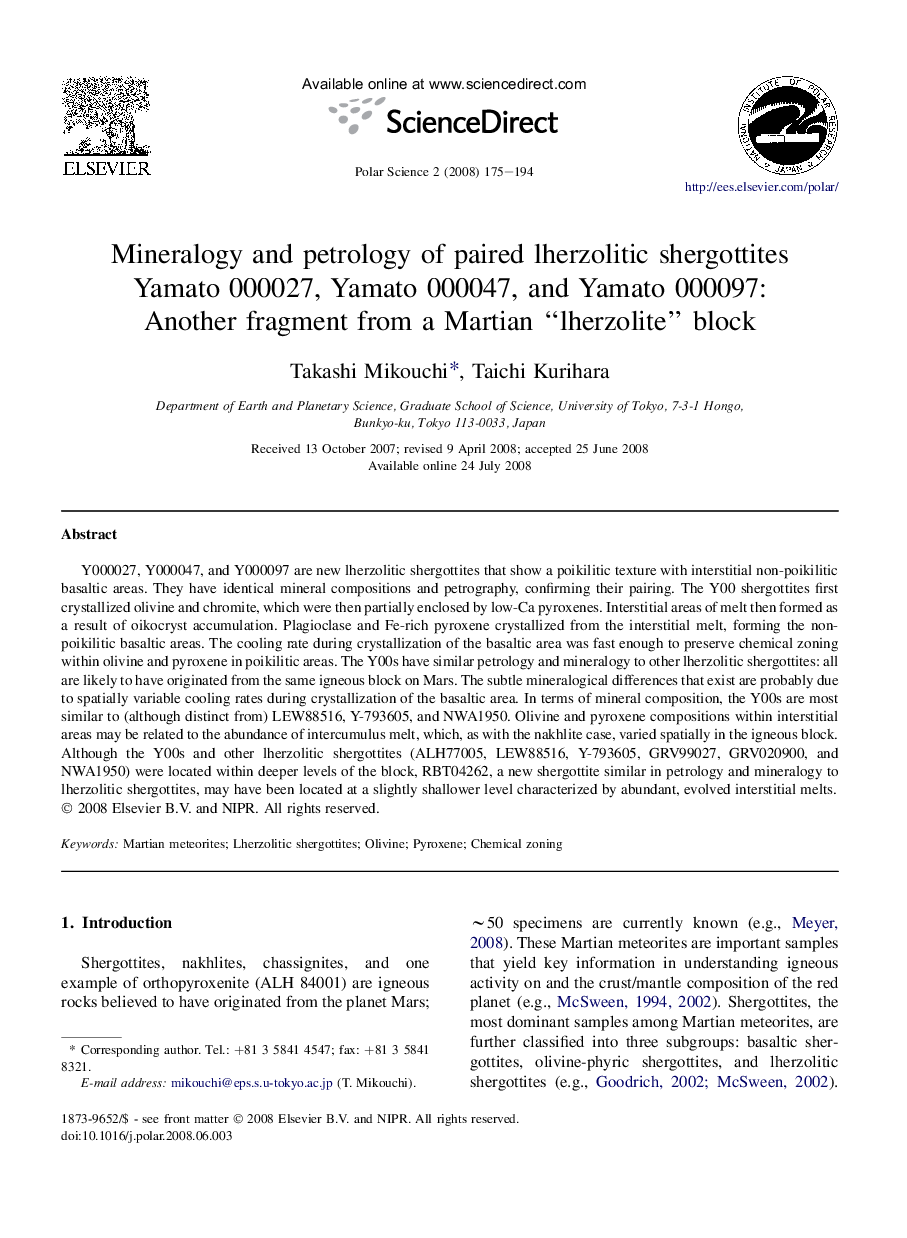| Article ID | Journal | Published Year | Pages | File Type |
|---|---|---|---|---|
| 4683340 | Polar Science | 2008 | 20 Pages |
Y000027, Y000047, and Y000097 are new lherzolitic shergottites that show a poikilitic texture with interstitial non-poikilitic basaltic areas. They have identical mineral compositions and petrography, confirming their pairing. The Y00 shergottites first crystallized olivine and chromite, which were then partially enclosed by low-Ca pyroxenes. Interstitial areas of melt then formed as a result of oikocryst accumulation. Plagioclase and Fe-rich pyroxene crystallized from the interstitial melt, forming the non-poikilitic basaltic areas. The cooling rate during crystallization of the basaltic area was fast enough to preserve chemical zoning within olivine and pyroxene in poikilitic areas. The Y00s have similar petrology and mineralogy to other lherzolitic shergottites: all are likely to have originated from the same igneous block on Mars. The subtle mineralogical differences that exist are probably due to spatially variable cooling rates during crystallization of the basaltic area. In terms of mineral composition, the Y00s are most similar to (although distinct from) LEW88516, Y-793605, and NWA1950. Olivine and pyroxene compositions within interstitial areas may be related to the abundance of intercumulus melt, which, as with the nakhlite case, varied spatially in the igneous block. Although the Y00s and other lherzolitic shergottites (ALH77005, LEW88516, Y-793605, GRV99027, GRV020900, and NWA1950) were located within deeper levels of the block, RBT04262, a new shergottite similar in petrology and mineralogy to lherzolitic shergottites, may have been located at a slightly shallower level characterized by abundant, evolved interstitial melts.
